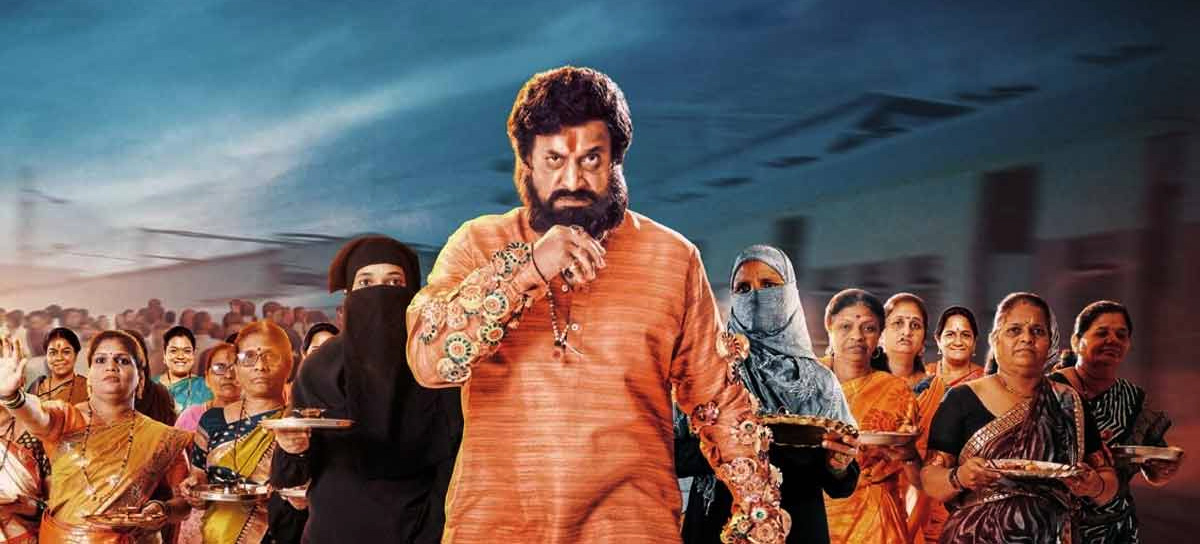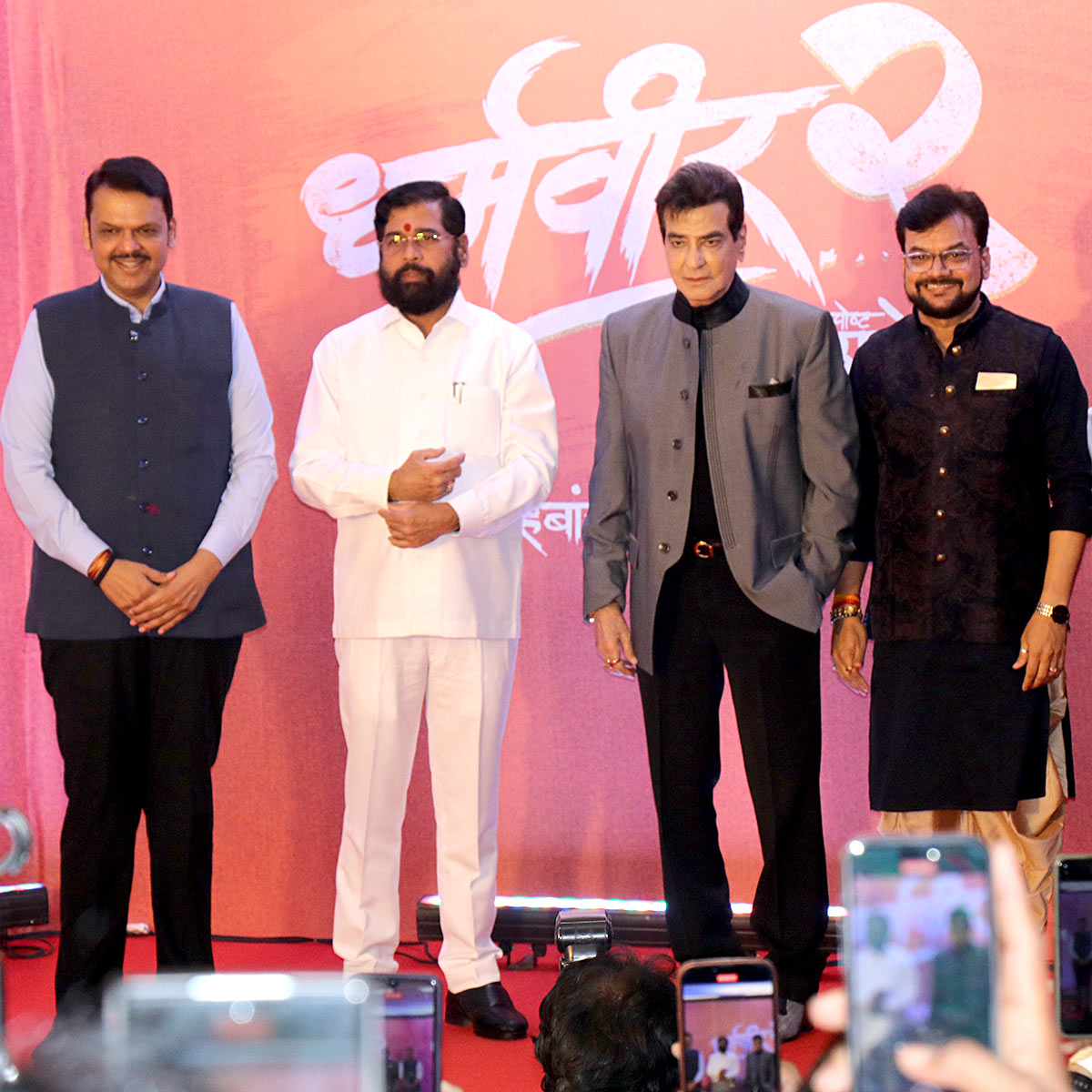 | « Back to article | Print this article |
From start to finish, Dharmaveer 2 feels less like a biopic and more like propaganda crafted for Eknath Shinde's political gain, observes Prasanna D Zore.

Watching Dharmaveer 2: Mukkam Post Thane was a confusing experience. Not because of its subject matter but because of its glaring attempt to glorify Chief Minister Eknath Shinde as the 'true heir' to the late firebrand Shiv Sena leader Anand Dighe and his street-smart Hindutva learned by him under the tutelage of Shiv Sena supremo Bal Thackeray.
From start to finish, the film feels less like a biopic and more like propaganda crafted for Shinde's political gain.
The elections to the Maharashtra assembly are due in November and this film seems like an attempt to whitewash the incumbent chief minister of the 'Gaddar' (traitor) tag levelled by the Shiv Sena (Uddhav Thackeray).
It is an attempt to earn cinema-goers' empathy -- and votes -- by justifying Shinde joining hands with the BJP and splitting the Shiv Sena after June 21, 2022, when he along with a dozen Shiv Sena MLAs vamoosed to Surat and later formed a government in Maharashtra by highlighting how Uddhav Thackeray and his Shiv Sena -- by joining hands with the Congress and Sharad Pawar's NCP -- diluted his father and Shiv Sena founder the late Bal Thackeray's brand of jwalant (firebrand) Hindutva,
I spoke to a few out of the 17 to 18 people who had come to watch the Marathi film in a Mumbai multiplex for a 9:45 am show, and most of them did not speak Marathi though they said they understood the language.
They did not know anything about Anand Dighe, but had come to watch the film 'to support Eknath Shinde's rebellion against Uddhav Thackeray for joining hands with the Congress.'
"Shindesaheb ne bohot achcha kiya aise logon ka saath chhodke (Eknath Shinde is justified in ditching Uddhav Thackeray for joining hands with non-Hindutvawadi parties)," said a non-Maharashtrian couple in their 40s, who had come to watch the film with their teenager son from distant Dahisar in north Mumbai.

Instead of providing a nuanced portrayal of Anand Dighe's life, contributions and complexities, the film pushes an agenda, forcing the audience to swallow the narrative that Shinde is the legitimate torchbearer of Dighe's Hindutva ideology.
As a film, one of the most glaring issues with Dharmaveer 2 is its bye-bye to nuance. The movie practically yells from the rooftop that Shinde is Dighe's true political successor, a comparison that feels forced and exaggerated.
Where Bal Thackeray and Anand Dighe emerged naturally as fierce protectors of Hindutva -- Bal Thackeray through his fiery oratory and Dighe through his raw, grassroots political style -- the film tries too hard to draw a parallel between the two leaders and Shinde.
Sometimes, you get a feeling that Director Pravin Tarde's cinematic adventure attempts to create a parallel between Dighe and the Sena supremo.
The attempt to position Shinde as a 'Dharmaveer' in his own right feels contrived, as though the film-makers were less concerned with telling a compelling story and more interested in propping up Dighe as a larger-than-life persona, who could match the heft and charisma of Bal Thackeray, and Shinde's political persona ahead of thecoming assembly elections.
Dighe was a strongman in his own right in Thane, but his influence undeniably came because of his loyalty to Bal Thackeray.
Dharmaveer 2 briefly touches on how Dighe was deeply affected by the suicide of a Class 1o student in Thane. This incident moved Dighe to initiate practice exams for students appearing for their board exams, a compassionate and community-driven initiative.
In another scene -- which seems contrived and wants to prove Dighe's street-smart secularism -- he is shown to celebrate Raksha Bandhan publicly and asks a Muslim lady in a burqa to lift her veil and only then tie a rakhi on his hand.
She reluctantly lifts her burqa only to reveal her swollen, red eye. It turns out that her drunkard husband had beaten her up and had threatened her with triple talaq. Dighe rushes to her house to teach her husband a lesson, daring him to divorce his wife by saying talaq, talaq, talaq.
A few moments before this scene, a bunch of Shinde loyalists -- Dada Bhuse, Sanjay Shirsat, Bharatsheth Gogawale, Shahaji Bapu Patil and Tanaji Sawant -- are shown singing praises to Narendra Modi and his government's move to abolish the oppressive practice of triple talaq.

Yet another sore point is the overuse of a stereotypical Muslim character, always sporting his fez cap, amid a sea of Dighe supporters, who readily expresses his willingness to sacrifice his life and limb for Dighe.
'Shiv Senecha sachcha Mussalman aahe mi (I am a true Muslim who supports the Shiv Sena),' he affirms, indicating to Muslim voters who their real protector is, and so, where their loyalty should lie.
This overuse only makes you circumspect about the film-maker's intent to tell the Muslim voter that Dighe as well as Shinde care as much for those 'sachcha Musslaman' as Bal Thackeray once did -- and he was quite vocal about it -- and if push comes to shove in this polarised atmosphere, Shinde and his government will always be there to protect them.
But moments like these are few and far between in the film, as the script quickly pivots back to showing Dighe as an unyielding enforcer of Hindutva, perpetually using aggression and violence to solve problems.
It's a disservice to Dighe's legacy, reducing his multifaceted personality to little more than a caricature.

As for Eknath Shinde, his portrayal feels out of place and overstated.
The film bends over backward to depict him as Dighe's most loyal and capable follower, the chosen one who will carry forward Dighe's mission of Hindutva.
There's an unmistakable sense that Shinde is using Dharmaveer 2 as a platform to further his political career, leveraging Dighe's larger-than-life image to bolster his own credentials.
Where Dighe had an organic, grassroots connection with the people of Thane, cultivated through years of hands-on leadership, toiling with and fighting alongside the ordinary Shiv Sainik, Shinde's rise feels far more engineered, and the film does little to hide that.
The movie's attempt to link Bal Thackeray and Anand Dighe as twin pillars of the Shiv Sena's Hindutva is also problematic.
While Bal Thackeray was undeniably the ideological and unapologetic architect and practitioner of the Shiv Sena's firebrand Hindutva, Dighe's role was far more localised, centred around Thane.
By positioning Dighe as an equal to Thackeray, the film overstretches the scope of Dighe's influence, ignoring the broader, more complex nature of the Shiv Sena's grassroots politics. And by extension, the film balloons Shinde's role within this narrative, as though inheriting Dighe's legacy automatically places him on par with the Thackeray family in terms of political clout and influence.
Dharmaveer 2 is a missed opportunity.
Rather than offering a nuanced portrait of Anand Dighe, his life and times, it devolves into a one-dimensional celebration of Hindutva politics and an unabashed endorsement of Eknath Shinde.
